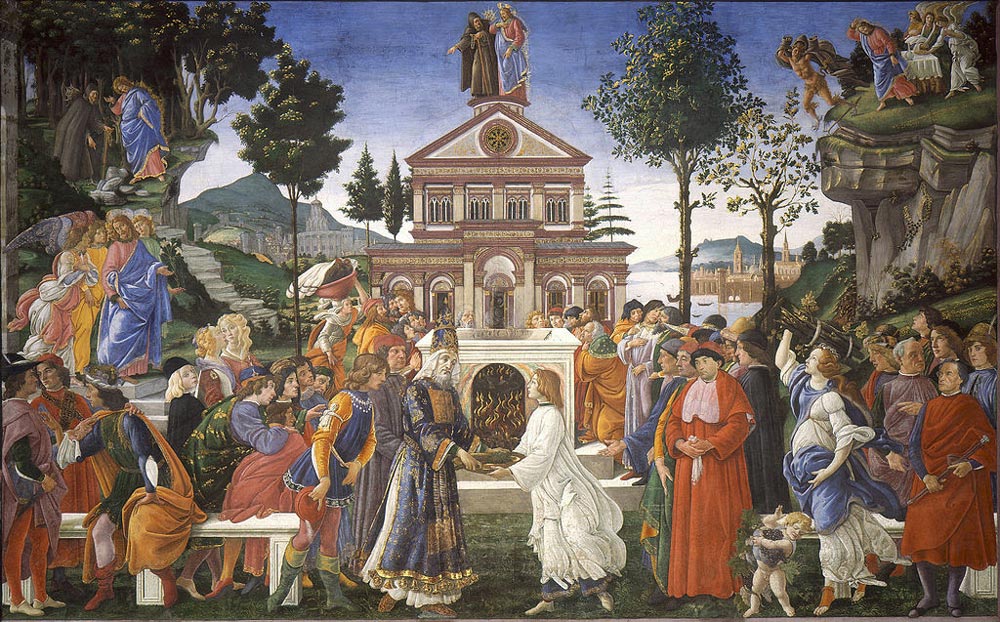| Temptations of Christ | |
|---|---|
 |
|
| Artist | Botticelli |
| Year | 1480–1482 |
| Medium | Fresco |
| Location | Sistine Chapel, Rome |
| Dimensions | 136 in × 219 in |
| 345.5 cm × 555 cm | |
| Famous Paintings by Botticelli | |
| Fortitude | |
| Adoration of the Magi | |
| The Birth of Venus | |
| Primavera | |
| Cestello Annunciation | |
| Saint Augustine | |
| Venus and Mars | |
| The Mystical Nativity | |
| Temptations of Christ | |
| Complete Works |
Botticelli and several assistants completed the fresco known as the Temptations of Christ in 1482 after almost 2 years of labor. The work was part of the Sistine Chapel project at the Vatican, and his portion was requested by Pope Sixtus and Lorenzo de’Medici in a joint effort of reconciliation.
What is the Painting About?
The painting was based on a specific theme proposed by the commissioners having to do with the similarities between the stories of Christ and of Moses, and between the old laws and the new law put forward by Christ, all of which also demonstrated the connection between the New and Old Testaments. This theme echoed the idea of reconciling the Vatican and civil powers in Rome.
Composition
Depicted in the upper section of the fresco are three scenes taken from the life of Jesus in the Gospels. The upper left episode is a meeting between the devil, in the guise of a hermit, and Christ. The upper center panel depicts the two characters struggling over a temple, and the scene on the right has Satan being overthrown from a high rocky place. In the foreground the painter has composed a scene of a sacrificial ritual in which the younger male figure stands for Christ and the priestly figure for Moses. The overall effect of the work is that it is busy with action and crowded with many persons, and each detail tells a story. The background is a mountainous landscape, and the colors are primary, brilliant, and fresh (typical of frescoes in this style).